The Serpentine Gallery
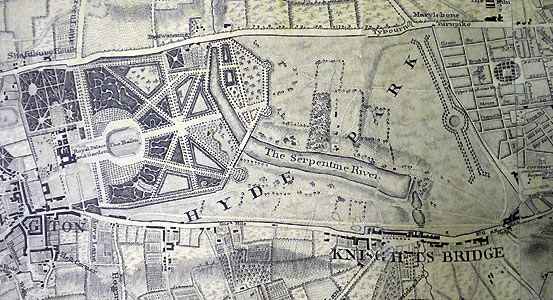
Map of the Serpentine lake which separates Hyde Park from Kensington gardens
Whenever I think of the Serpentine Gallery – I think of the beautiful colours and patterning found in Serpentine stone, and the texture of it polished and the feel of it as it is carved. A gallery full of carved Serpentine sculpture.
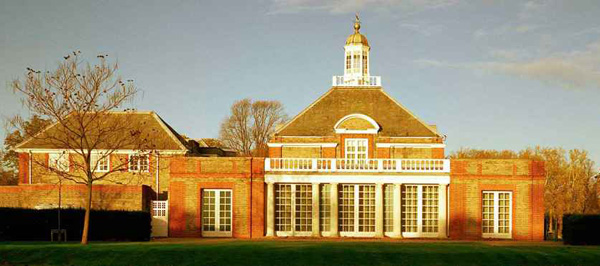
Serpentine Gallery, Kensington Gardens, Hyde Park
But actually the gallery is what used to be a Tea Room in Kensington Gardens and got its name from the Serpentine River. The river isn’t actually a river, but a very large lake – some 40 acres of recreational lake in Hyde Park, London created upon the instruction of Queen Caroline in 1740. Although the whole area of water is referred to as the Serptentine, it only refers to the Eastern part of the lake. Serpentine Bridge marks the boundary between Hyde Park and Kensington Gardens, and also marks the Serpentine’s western boundary – the remainder being known as Long Water. The Serpentine takes its name from its snakelike, curving shape, although it only has one bend.
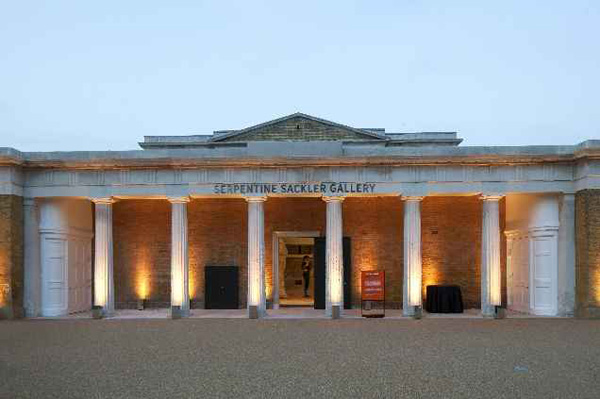
Old Gunpowder store – source Luke Hayes
The Serpentine Gallery has recently expanded, and restored a former gunpowder store nearby, a single story brick building of 1805, and named Serpentine Sackler Gallery. The new Gallery is named after Dr Mortimer and Dame Theresa Sackler, whose Foundation has made the project possible through the largest single gift received by the Serpentine Gallery in its 43-year history. Major funding has also been awarded by Bloomberg, long term supporters of the Serpentine as well as sponsors of the opening exhibition.

Elephant – part of the installation by Adrian Villar Rojas at the Serpentine Sackler Gallery
Argentinian artist Adrián Villar Rojas, who is gaining international renown for his dramatic, large-scale sculptural works was the first to show at the gallery, with his site specific installation Today we Reboot the Planet. Fabricated almost entirely out of mud, clay and brick, a grey and dusty vision of the future offers a fantastical comment on the fragility of the world’s ecology.
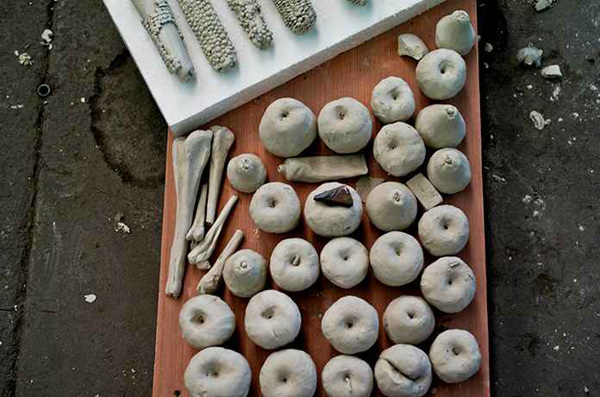
Trays of clay apple sculptures. (Source: Guardian)
Working with a team of collaborating builders, sculptors and engineers, Villar Rojas tested the limits of clay to create an apparently fossilised world of ruins and ancient monuments that play with the concept of time, history, modernity and the future. I find myself agreeing with his comments about how human activity has changed the world and and delighted an artist making work about the environment and our planet is receiving so much attention. He talks beautifully about clay (which he uses for his sculpture), being a gift, celebrating how the material behaves naturally, allowing this to help speak his message.
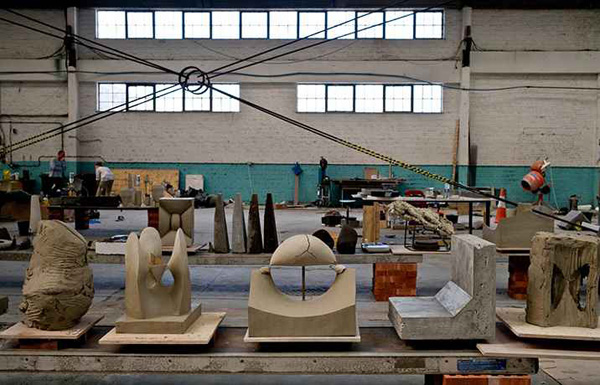
- Adrian Villar Rojas workshop, sculpture in preparation for his exhibition (Source: Guardian)
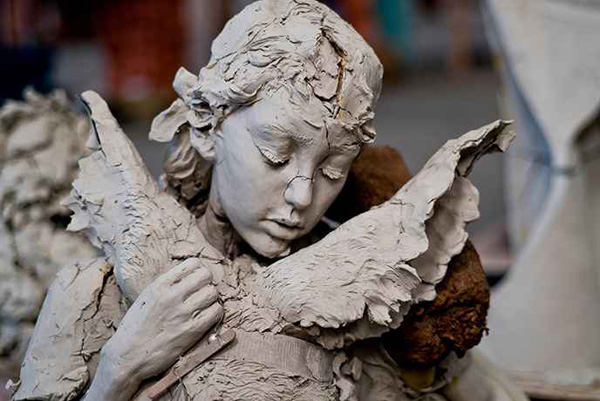
Clay sculpture by Adrian Villar Rojas. (Source: Guardian)
I can perhaps now add mud, clay and bricks to my mental image of the Serpentine Gallery as well as stone.
